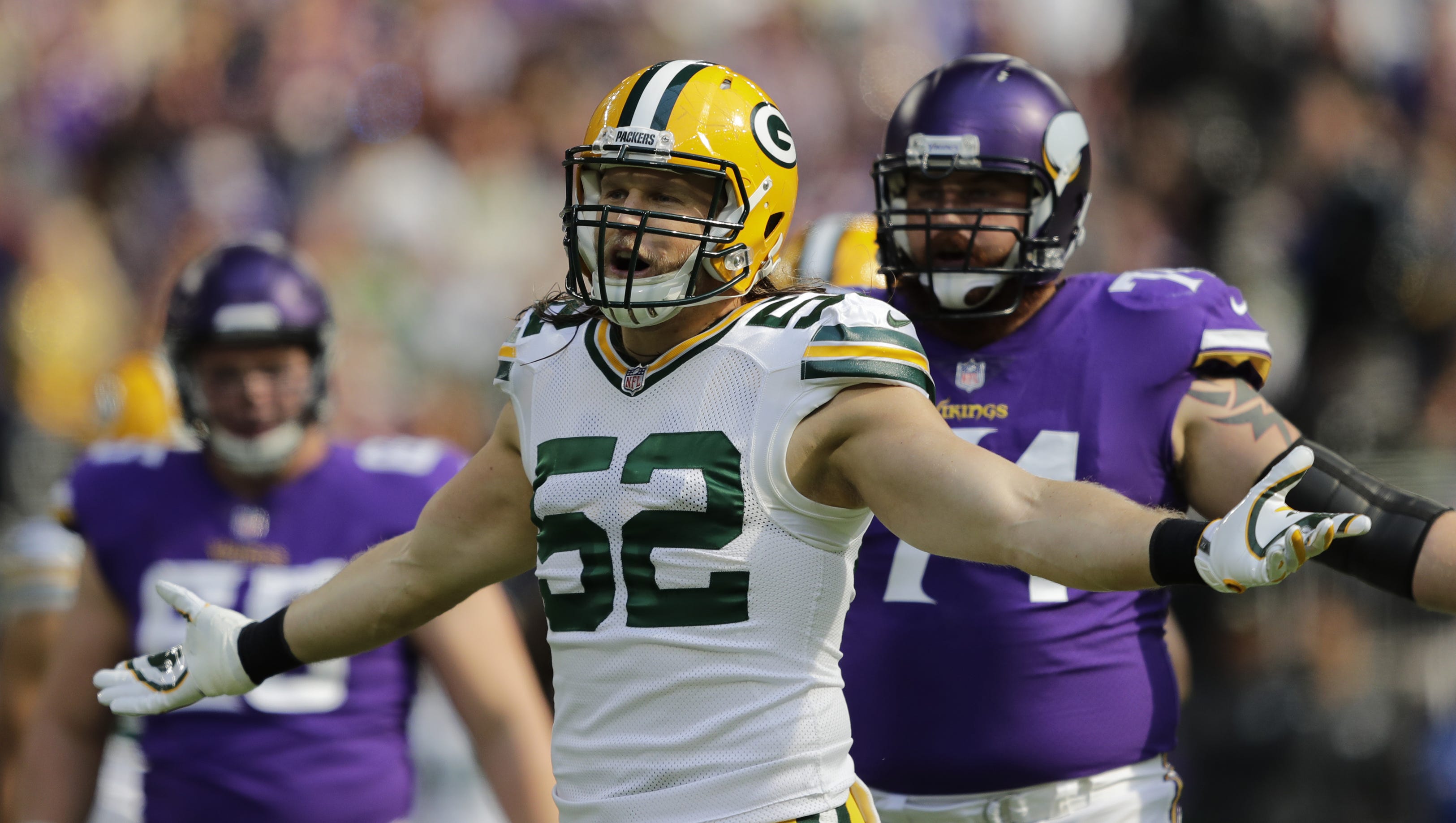Dougherty: Packers need Clay Matthews playing inside
 Pete Dougherty
Pete Dougherty
We’ll learn something about the Green Bay Packers’ new regime by what happens with Clay Matthews this offseason.
Matthews is the Packers’ all-time sacks leader (80) and a six-time Pro Bowler. He also turns 32 in May, has a history of performance-diminishing injuries and hasn’t hit double-digit sacks the last three seasons.
So the Packers face some big decisions regarding Matthews. Will new general manager Brian Gutekunst try for a contract extension that includes lowering Matthews’ 2018 pay of $11.4 million? Or ask for a straight-up pay cut that could lead to possibly releasing Matthews? Or will Gutekunst do nothing and bring him back for the last year of his contract?
And assuming Matthews comes back, how will new defensive coordinator Mike Pettine use him? Mostly on the edge, where Matthews has played most of his career? Or primarily as a traditional linebacker who lines up as an outside rusher only occasionally?
The answer to those questions will reveal just how acute Gutekunst and coach Mike McCarthy consider the team’s pass-rush issues. I’m of the opinion former GM Ted Thompson didn’t take them seriously enough the past two years.
RELATED:Ted Thompson energized by new role as talent scout
RELATED:Brett Favre sued over failed Sqor Sports social media site
RELATED:Child abuse trial scheduled for Ahman Green
As for Matthews’ contract, he’s currently the Packers’ second-highest paid player in 2018 pay ($11.4 million), behind Aaron Rodgers ($20.5 million), and their fourth-highest cap hit (also $11.4 million), behind Rodgers (also $20.5 million), Randall Cobb ($12.7 million) and Jordy Nelson ($12.5 million).
Still, from where I’m sitting, the Packers don’t have the leverage to get Matthews to take a straight pay cut. Though he hasn’t played like an $11.4 million pass rusher the last couple of seasons, Matthews still is one of the more talented players on a defense that is hardly abundant in talent. If they cut him, they get worse. He knows that, so he’s not going to agree to restructure the final year of his contract.
Now, would he agree to a contract extension that lowers his ’18 cap number and pay? That I don’t know. It would take some crafty work from team vice president Russ Ball and probably also guaranteed money in ’19 to possibly get Matthews to bite.
The best bet is that he plays the final year of his deal and takes it from there. At the Senior Bowl last week, Gutekunst strongly signaled he expects Matthews back in ’18 and perhaps thereafter also.
Gutekunst told Michael Cohen of the Milwaukee Journal Sentinel that Matthews’ genes work in his favor as he gets older. Matthews’ father, Clay Jr., played an incredible 19 years as an NFL linebacker (1978-96), and not counting quarterbacks and kicking-game specialists has played the sixth-most games in NFL history (278). The No. 2 on that list is Matthews’ uncle, Pro Football Hall of Fame offensive lineman Bruce Matthews (296).
“Obviously there’s a history in his family of guys that have been able to play a long time,” Gutekunst said. “I think Clay is probably no different. He still plays at a very, very high level. He’s such a versatile player for us, and I think it will be neat to see how Mike (Pettine) and his new staff kind of use him and maybe move him around. So I’m excited to see that. Clay has been a good player for a long time. We expect him to be a good player moving forward.”
RELATED:Safeties coach Darren Perry parts ways with Packers
DOUGHERTY:Mike Pettine downplays defensive complexity
RELATED:Gutekunst needs to be ruthless with roster
Pettine in his introductory news conference last week gave little indication of his plans for Matthews. He gave the obligatory versatility and move-him-around answer, true such as it is. But that’s always a given with Matthews.
The important question is where Matthews lines up in the nickel on early downs, because nickel is the new base in the NFL. At this point in his career, I’d play him mostly at conventional linebacker, and move him outside only occasionally, like the Packers did for the second half of 2014 and all of ’15.
It bears pointing out that in Matthews’ one full season playing primarily inside linebacker, the Packers ranked No. 12 in points allowed and No. 7 in defensive passer rating. After the Packers moved him inside for the final eight games in 2014, they ranked Nos. 9 and 12.
That’s not big-time NFL defense, but it’s a lot better than 2016 (Nos. 21 and 26) and last season (Nos. 26 and 31). I’m not suggesting the difference is all because of Matthews playing inside. But it’s hard to dismiss it as a factor. He’s a better player in that role at this point in his career. He’s just not as explosive a rusher on the edge as he used to be, and he has more of an impact on the game when he lines up inside.
Matthews immediately would be the Packers’ best off-the-line linebacker. Though Blake Martinez was a good run stopper in his second season, he’s not as disruptive as Matthews. And Matthews is faster and longer in pass coverage over the middle of the field, where offenses have chewed up the Packers the last two seasons.
Matthews is 1½ inches taller than Martinez (6-3⅛ at the NFL scouting combine to Martinez’s 6-1⅝), and his arms are a little longer (32½ inches to 31⅝). That extra size and reach make a difference, especially in zone coverage over the middle.
More importantly, Matthews is more explosive, even if he isn’t the athlete he was coming out of college. Martinez’s 40 time (4.71 seconds) isn’t that much worse than Matthews’ (4.66), but look at their 10-yard split. Matthews ran the first 10 yards in an off-the-charts 1.49 seconds. For perspective, according to MockDraftable, that puts him in the 91st percentile among defensive backs at the combine since 1999, and the 94th percentile of running backs. Amazing.
Matthews also jumped much higher (35½ inches to 28½) and longer (10-1 to 9-5) than Martinez, who was the Packers' best inside linebacker last season.
Even if Matthews couldn’t put up those numbers at age 31, they confirm what you see with the naked eye. He’s the better athlete.
So move Matthews inside from the get-go this offseason. It’s his best position now, and it will acknowledge a big front-office project for the next couple months: adding a couple of pass rushers.